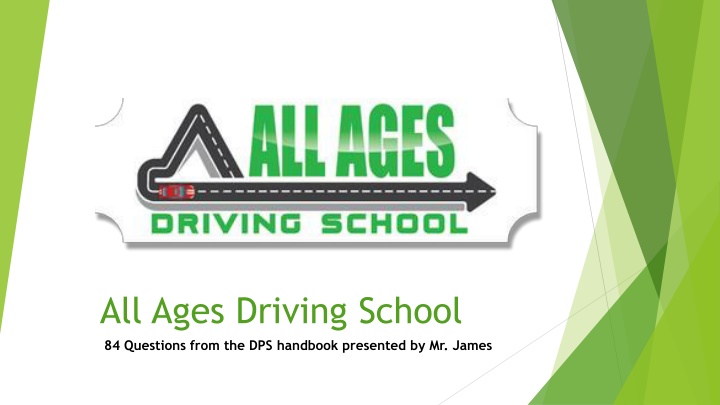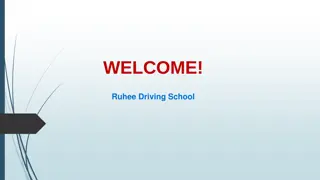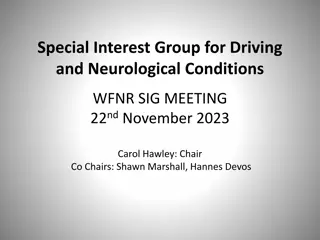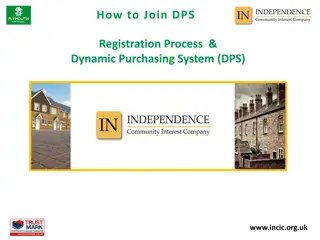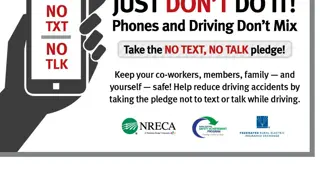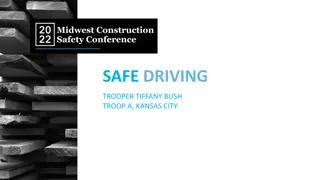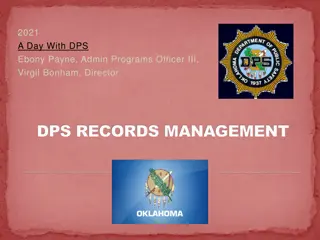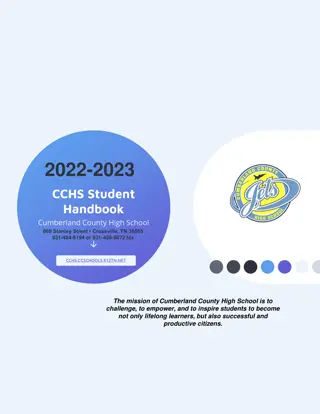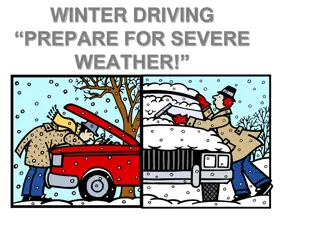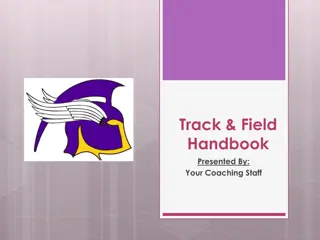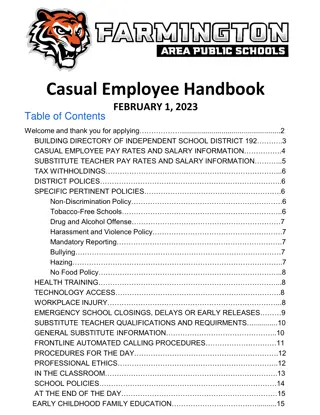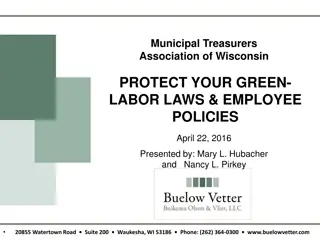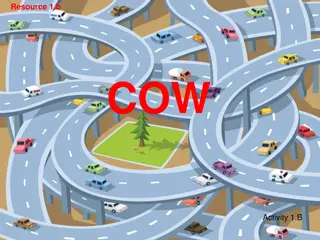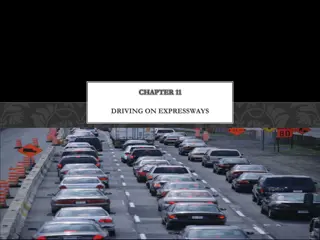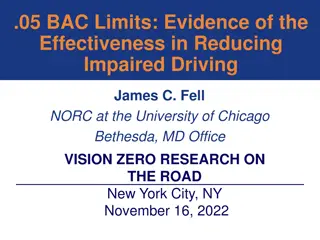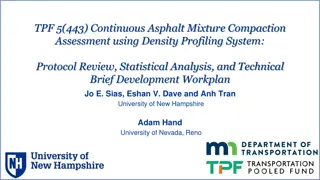All Ages Driving School - DPS Handbook Questions Presented by Mr. James
Explore 84 questions from the DPS handbook in a comprehensive presentation by Mr. James. Delve into important topics such as licensing requirements, fines, restrictions, parking guidelines, renewal procedures, and road markings. Enhance your knowledge and understanding of Texas driving regulations through this informative session.
Download Presentation

Please find below an Image/Link to download the presentation.
The content on the website is provided AS IS for your information and personal use only. It may not be sold, licensed, or shared on other websites without obtaining consent from the author.If you encounter any issues during the download, it is possible that the publisher has removed the file from their server.
You are allowed to download the files provided on this website for personal or commercial use, subject to the condition that they are used lawfully. All files are the property of their respective owners.
The content on the website is provided AS IS for your information and personal use only. It may not be sold, licensed, or shared on other websites without obtaining consent from the author.
E N D
Presentation Transcript
All Ages Driving School 84 Questions from the DPS handbook presented by Mr. James
All Ages Checklist 1. You will need a pen or pencil 2. You will need notebook with paper 3. A Texas Drivers Handbook (Revised September 2017) Edition 4. A copy of the 84 Questions 5 Feel free to pause anytime during this presentation to copy of seek further explanation.
Question #1: What is the minimum age at which you can get a Class C driver license without either driver education or being a hardship case? (Chpt. 1) Answer on Page 28 Age 25 is the minimum age at which you can apply for a drivers license without formal drivers education.
Question #2: How much is the maximum fine for a first conviction of driving without a license? (Chpt. 1) Answer on Page 9 (Table 7) $200
Question #3: What type of restrictions may be placed on your license? (Chpt. 1) Answer on Page 9 (Table 8) A = Must wear corrective lenses B = Must have a licensed operator in front seat age 21 or older F = Must hold valid learners license until (Date, usually 6 months form issued)
Question #4. In what direction should you turn your wheels when parking uphill without a curb? (Chpt. 7) Answer on Page 47 Turn wheels to the right.
Question #5. What action should you take if you fail to receive the renewal notice card reminding you that your driver license is about to expire? (Chpt. 1) Answer on Page 10 It is your responsibility to renew your license regardless if a renewal notice is sent or not.
Question #6. On a one-way street, what color is the broken lane marker? (Chpt. 5) Answer on Page 36 The color of a one way street lane marking is WHITE.
7. Describe the Yield sign. (Chpt. 5) Answer on Page 34 Red and White upside down triangle with the words YIELD in the middle.
Question #8. What does a Narrow Bridge sign look like, and how should the driver react when he sees one? (Chpt. 5) Answer on Page 31 It s a yellow diamond shaped sign and one should slow down and proceed with caution.
Question #9. What is the shape of a Keep Right sign, and how should the driver react when he sees one? (Chpt. 5) Answer on Page 30 and 33
Question#10. Which sign tells you to slow down because you are approaching a double curve? (Chpt. 5) Answer on Page 30
Question #11. What does a Do Not Pass sign mean? (Chpt. 5) Answer on Page 33
Question #12. Which sign tells you to keep in the right-hand lane when driving slow? (Chpt. 5) Answer on Page 33
Question #13. What does Yield Right-of-Way mean? (Chpt. 4, 5) Answer on Page 23 and 34 Yield Right of Way means you must slow down or stop if necessary and give way to other drivers already occupying a space or road.
Question #14. Describe the equipment required on passenger cars by state law. (Chpt. 2) Answer on Page 18 (Table 13) Brakes, Lights, Horns, Muffler, Exhaust System, Safety Glass, License Plate, Windshield Wiper, Rearview Mirror, Safety Belts, Tires, Fuel Cap.
Question #15. What is the purpose of an exhaust emission system? (Chpt. 2) Answer on Page 18 To reduce pollution.
Question #16. Describe the types of equipment that Texas state law specifically forbids on passenger cars driven within the state. (Chpt. 2) Answer on Page 19
Question #18.How should you react when a traffic officer tells you to do something that is ordinarily considered to be against the law? (Chpt. 5) Answer on Page 28 Always follow the directions of a Traffic Officer
Question #18. Once the brakes have been applied, about how many feet does a car which was going 70 mph travel before it comes to a stop? (Chpt. 8) Answer on Page 48 233 Feet
Question #19. When is it necessary to stop before proceeding when you overtake a school bus loading or unloading children? (Chpt. 4) Answer on Page 26 When red lights are flashing and stop sign is showing.
Question #20. About how many feet will the average driver going 50 mph travel from the moment he sees danger until he hits the brakes? (Chpt. 8) Answer on Page 48 110 feet
Question #21. Within how many feet of a crosswalk may you park, when parking near a corner? (Chpt. 7) Answer on Page 45 Within 20 feet of a crosswalk at an intersection.
Question #22. What is the state speed limit for automobiles in urban districts? (Chpt. 8) Answer on Page 49 (Table 24) 30 MPH (Miles Per Hour)
Question #23. Does a posted speed limit of 55 mph mean that you may drive 55 mph on that highway under all conditions? (Chpt. 8) Answer on Page 48 Speed Limit sign is for normal driving conditions. However, under adverse conditions (rain, heavy traffic, limited visibility and reduced traction) you must go slower then the posted speed limit.
Question #24. You should never drive on the left half of the roadway when you are within how many feet from an intersection, bridge, or railroad crossing? (Chpt. 6) Answer on Page 41 100 Feet
Question #25. What should you do if you discover you are in the wrong lane to make a turn as you enter an intersection? (Chpt. 6) Answer on Page 42 Continue straight and find a safe turn around further up the road or detour.
Question #26. When two cars meet at the intersection of a two- lane road with a four-lane road, which one must yield the right-of- way? (Chpt. 4) Answer on Page 23 Two-lane road must yield to a four-land road.
Question #27. If you are driving and hear a siren coming, what should you do? (Chpt. 4) Answer on Page 25 Simply yield, depending where the emergency vehicles is coming from. For example if it is behind you pull over to the right of the shoulder to let it pass.
Question #28. What is the first thing that should be done when a car starts to skid? (Chpt. 9) Answer on Page 52 Do not hit the brakes suddenly or hard. Take foot off the gas.
Question #29. At what time of the day should your headlights be turned on? (Chpt. 9) Answer on Page 50 You must use your headlights beginning 30 minutes after sunset and ending 30 minutes before sunrise, or anytime when individuals or vehicles cannot be seen clearly for at least 1,000 feet.
Question #30. Under what conditions may your driver license be suspended?(Chpt. 1) Answer on Page 12 A license can be suspended for a number of different violations from continued reckless driving (point system) to mandatory suspension for violations considered a felony or dangerous. For example, DWI, drug offenses, racing on public roads, over taking a school bus.
Question #31. What is carbon monoxide, and how may it be harmful to drivers? (Chpt. 14) Found on Page 71 Carbon Monoxide is a deadly gas. When exposed to Carbon monoxide make sure to find fresh air and ventilation. Symptoms include dizziness and sleepiness, over exposure leads to death.
Question #32. Describe what you should do if you have a blowout while driving. (Chpt. 9) Answer found on Page 52 1. Do not hit the breaks suddenly or hard 2. Take foot off gas and break gently 3. Steer straight ahead to stop.
Question #33. What should you do when driving down a steep grade in a car with standard transmission? (Chpt. 9) Answer on Page 52 When driving down a steep hill, you can shift your car into a low gear to help slow your vehicle. Never coast in neutral or for cars with a standard transmission, never coast with your foot on the clutch.
Question #34. What should you do if you damage an unattended vehicle? (Chpt. 11) Answer on Page 63 1. Locate the operator or owner of the unattended vehicle and give your name and address 2. Securely attach a written notice in a visible way, to the unattended vehicle providing: Your name and address A statement of the circumstances of the collision
Question #35. When are crash reports required? (Chpt. 11) Answer on Page 62 If you are involved in a crash that is not investigated by a law enforcement officer and the crash has not resulted in injury or death of a person or damage to property of $1,000 or more, you must make a written report of the crash and file it with the Texas Department of Transportation (TxDOT) no later than the 10th day after the date of the crash. The written report must be on a TxDOT specified form.
Question #36. If you are required to show proof of financial responsibility for the future, how many years must such proof be kept up? (Chpt. 3) Answer on Page 22 2 years
Question #37. What type of sign warns you to watch right and left for cross traffic? (Chpt. 5) Answer on Page 30 and 31
Questions #38. Describe the emblem that identifies vehicles which travel at speeds of 25 mph or less. (Chpt. 5) Answer on Page 40 Orange Triangle.
Question #39. In which gear should you drive when going down a steep hill? (Chpt. 9) Answer on Page 52 When driving down a steep hill, you can shift your car into a low gear to help slow your vehicle. Never coast in neutral or for cars with a standard transmission, never coast with your foot on the clutch.
Question #40. What qualifications must one have to teach a beginner to drive? (Chpt. 1) Answer on Page 1 The licensed driver must be at least 21 years of age with at least one year of driving experience, must occupy the seat beside the driver, and cannot be intoxicated, asleep, or engaging in any activity that prevents observation and response to the actions of the driver.
Question #41. If the person is under 18, when does his provisional license expire? (Chpt. 1) Answer on Page 3 A provisional license holders license will expire on their 18thbirthday.
Question #42. When parked parallel, your curb side wheels must be no more than how many inches from the curb? (Chpt. 7) Answer on Page 47 Do not park more than 18 inches from the curb or edge of the road.
Question #43. When following another car, what is a good distance at which you should follow behind? (Chpt. 8) Answer on Page 48 You should keep a safe distance between your car and the one in front of you. The faster you drive, the greater the distance you should keep from the car ahead of you. For speeds 30 mph or less, the minimum time between your car and the one in front of you is 2 seconds with good road conditions. For speeds above 30 mph, maintain a 4 second gap between cars during good road conditions. During periods of poor road conditions, allow more time. Using a four-second following interval is the best practice for a beginning or less experienced driver.
Question #44. To what agency and within what time period must a change of address be reported for driver licensing purposes? (Chpt. 1) Answer on Page 10 A change of name or address must be reported to DPS within 30 days. A license expiring in less than 12 months, or in less than 30 days for a provisional license, should be renewed not duplicated.
Question #45. What effects does the use of marijuana and amphetamine have on driving? (Chpt. 10) Answer on Page 58 Marijuana can affect concentration, judgment, and sensory and perceptual skills. Amphetamine makes a driver less coordinated, edgy, and is more likely to be involved in a car crash
46. What is the penalty for being convicted of driving while intoxicated? (Chpt. 10) Answer on Page 61 (Table 33)
